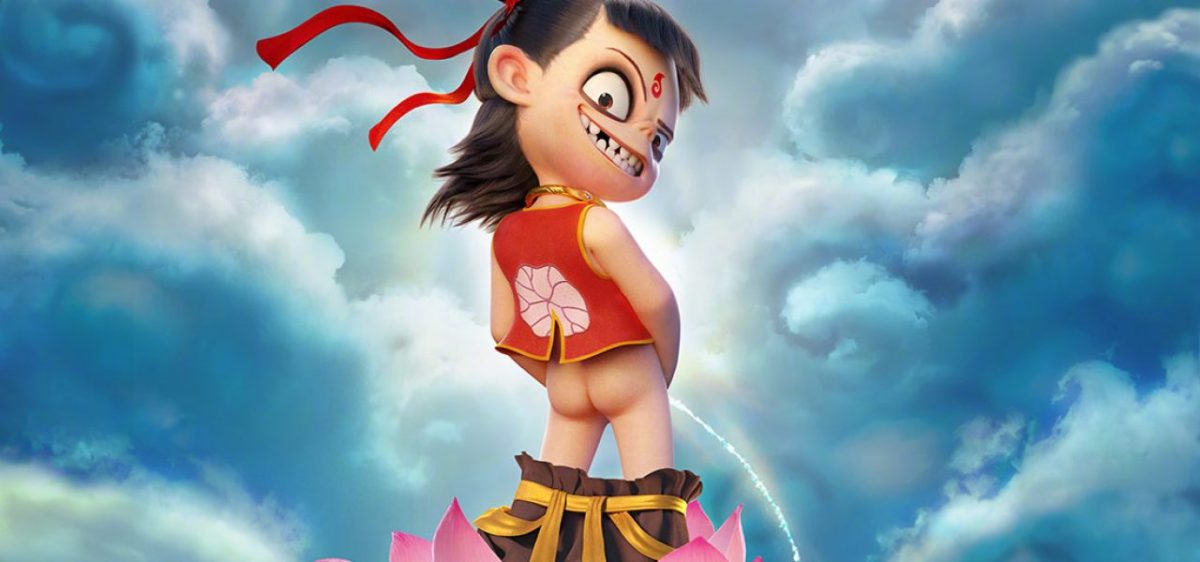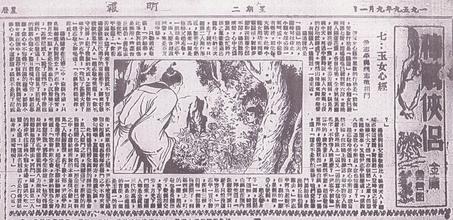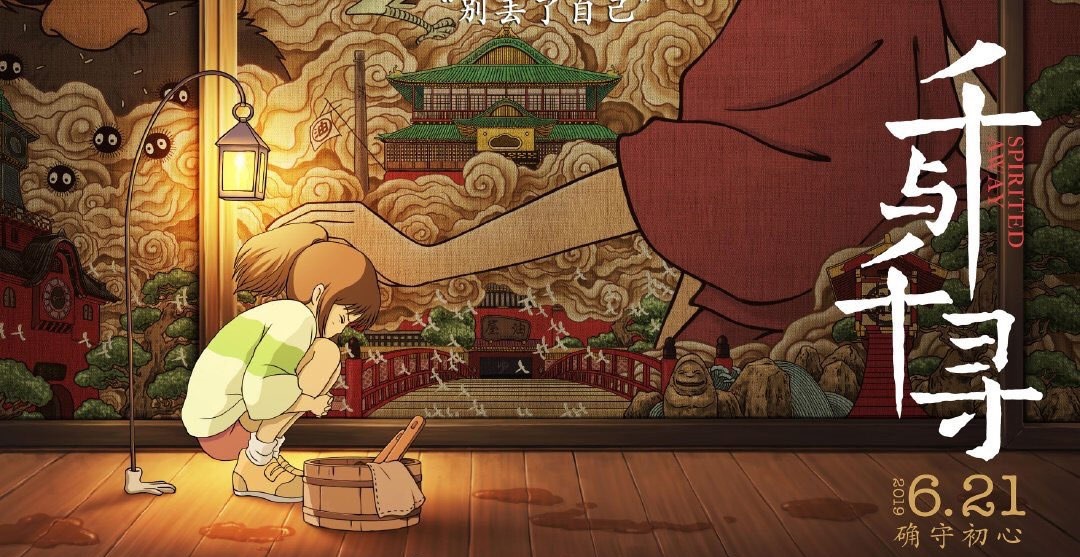There is only one factor that led Alita to China Box-Office breakout success: Female Superheroes Are Gold!
By Ryan Carroll, Editor-at-Large
February, 2019.
James Cameron’s popularity in China and his pre-release press conference for Alita: Battle Angel did help. A press conference where some of China’s top directors joined Cameron on stage: Zhang Yimou, Wuershan, and recent Kingmaker Frant Gwo. The director of what potentially could be 2019’s biggest single territory hit The Wandering Earth – unless it gets snapped out of existence before the Red Giant reaches it….
The press conference also featured a Q&A with James Cameron and Three-Body Problem / The Wandering Earth author Liu Cixin, followed by another Q&A with Cameron by director Frant Gwo (Guo Fan).
This international media worthy press conference surly helped create buzz surrounding Alita‘s lead-up to its China release, but it was not the key reason for its $65MMUSD opening weekend. An opening weekend tally that took in more money in three days than Alita‘s entire ten day run in North American, at the same point.
There is a growing trend at the China Box-Office that has only caught the attention of a few seasoned China Watchers. A trend that has been tackled more than once by this very online trade publications, the fact that: Female Superheroes Are Box-Office Gold in China!
Even Ghost in the Shell starring Scarlett (White on the Outside, Asian on the Inside) Johansson made $29.3MMUSD at the China box-office, over $20MM more than its next largest international territory Japan….but, let’s not use this as our “prime example!”
This trend first caught China Watchers’ eye when DC’s Wonder Woman became the best superhero multiplier at the China box-office. A feat that appears to have only been outdone by last year’s surprise hit Aquaman.
Unlike Wonder Woman, Aquaman had the unique potential to tap into a series of different genres that appealed to general movie going audience in China. A subject we discussed in our Inaugural MiniCast on Castbox.fm.
A Mini-Podcast from Silk Celluloid that dove into the fact that Aquaman was not just another superhero movie, but one that had style elements of Jim Cameron’s very own Avatar and even a “tomb raiding” genre sub-plot.
Speaking of the Tomb Raiding genre, meeting Female Superhero Gold!
Alicia Vikander’s Tomb Raider was Q1’s most successful Hollywood tentpole China release in 2018, not because of its final box-office tally but because of its unusual second weekend box-office drop:
- Tomb Raider – Opening Weekend, $41.6MM / Second Weekend Drop 32%
- Black Panther – Opening Weekend, $67MM / Second Weekend Drop 56%
- Maze Runner: Death Cure – Opening Weekend, $21.6MM / Second Weekend Drop 80%
- Jumanji: Welcome to the Jungle – Opening Weekend $40MM / Second Weekend Drop 80%
- Pacific Rim: Uprising – Opening Weekend, $65MM / Second Weekend Drop 86%
- Star Wars: The Last Jedi – Opening Weekend, $28.7MM / Second Weekend Drop 92%
As seen above there is a trend at the China box-office of a second weekend drop of 80-85% for Hollywood blockbusters, franchises, and tentpole releases.
Leading trade pundits to continuously declare box-office failure when looking at Friday-to-Friday drops, as if they were comparing anticipated numbers that one would see in North America to those in China.
Seasoned China Watchers witnessing these drops month-after-month, knew early on that this is now part of the norm. During Q1 / Q2 of 2018 the trend was well established, by the numbers, as a piece of the China box-office that Hollywood should begin anticipating in their China release projections.
Being the first Hollywood blockbuster released after the Spring Festival long holiday, Alita: Battle Angel from producer James Cameron took off with a bang. Opening on Friday at just under $20MM and saw a 25.5% jump on Saturday, leading to a final weekend China box-office tally of $64.8MMUSD.
A tally that is on par with Steven Spielberg’s Ready Player One and the Tencent backed Kong: Skull Island. It is way to early and unclear to predict Ready Player One box-office numbers, for Alita, as that movie legged its way to $218MM in China. A surprising result no-one ever expected it to reach.
Right now, Alita is looking anywhere between $150-185MM but with its good word of mouth, it could go beyond even Ready Player One‘s range.
This analyst would not be surprised if it did so, but one should expect it to land on the higher end of the $150-185MM project final outcome. In line with other similar releases like Kong: Skull Island.
Alita could be the first Hollywood film of 2019 to break out in China. As it has something most other Hollywood releases do not have: that being Alita is a Female Manga Superhero meets Jim Cameron hybrid.
A unique combinations that its successful predecessors Wonder Woman, Ant-Man and the Wasp, and even Tomb Raider did not have.
Alita has already broken records at the China box-office, being Fox’s biggest opening in China, and potentially its last before the Disney merger is finalized.
Alita also set a new IMAX opening record for the month of February. Which is a surprise, as normally this is the month which the Chinese New Year lands. A holiday that is by far the most important season at the China box-office for the entire year.
Alita being the first Hollywood post-holiday release had a wide open field on IMAX compared to the long holiday of February 5th through the 10th, which saw an increase by 40% YoY grossing $32MMUSD over the ten day. Though, we should point out that actual IMAX tickets being sold were only up 16% YoY, meaning that ticket prices went up from the prior year and may have been raised specifically for the holiday period.
Alita was able to break the IMAX opening weekend record due to the fact that several major Chinese releases, The Wandering Earth, Pegasus, and Crazy Alien, were simultaneously released on IMAX screens before or on the long Chun jie holiday.
We must also take into consideration that The Wandering Earth, currently China’s second biggest domestic grosser of all time, opened in fourth place and only topped out as number one several days later. The Wandering Earth went on to become IMAX China’s highest grossing single film, overtaking 2015’s Mojin: The Lost Legend from Wuershan, with a final IMAX tally of $27.25MMUSD before Alita: Battle Angel took over its screens.
Alita has 15 days (your typical film lifespan at the China box-office) until Marvel’s Captain Marvel opens Day-n-Date in China. With only How to Train Your Dragon 3 coming out in-between these two Female Superhero films. An animated feature which should not pose any threat to Alita‘s box-office dominance.
No matter how much Alita‘s final tally may be over the next 15 days, the China box-office will not save this $170MM+ film from being a studio write-off, as Fox, Cameron, and Friends will only see 25% of the receipts at max.
What the China box-office will be able to provide to the studio and Cameron is, the ability to save-face for a film that will take years of non box-office ancillary revenues to turn a profit. A face-saving feet that allowed Pacific Rim to be “saved” by China, leading to a heart breakingly disastrous sequel gear specifically toward China and kids in the form of Uprising.
The Female Superhero sub-genre at the China box-office, is not the only space Hollywood should be paying attention to in the coming years. As China is following a trend that is already established in the U.S. that Digital Disruption has led to Female Geekdom representing 50% of all Geek Culture related industries. Which means that all fan & comic conventions, gaming, comics, anime, etc. demographically is now 50% female across the board.
Multiple studies on Female Geekdom, both academically and governmental, have show that females are more likely to choose a character that is female, in games, or a female led story in comics, up-to 75% of the time. When provided with an option between a male or female protagonist to choose from. The studies further went on to highlight the fact that the same is not true for their male counterparts, who would only chose a character of their same sex 35% of the time. A major marketing difference between the two demographics.
In China this trend is beginning to be noticed in the hardcore mobile gaming space, seen specifically in the hit MOBA mobile game
Honor of Kings. As 54% of all of Honor of Kings players in 2018 were female.
During this same period, these female players paid more for in-game purchases than their male counterparts. Making them the highest revenues per player and the largest demographic for the world’s largest mobile game.
A win-win scenario and one that should be paid attention to, if Fox and friends wish to monetize the IP that is the Alita film beyond just a potential sequel. To tap into this lucrative and growing demographic – Chinese Female Geekdom – by teaming up with local partners. Such as Blizzard teaming with NetEase Games for its mobile adaptation, Diablo: Immortal, or as Marvel Comics did in the development and publication of their first Manhua Marvel Superheroes with NetEase Comics.
I suspect Alita in its final China box-office tally will be more comparable to last year’s surprise hit Ready Player One than to uber China hits Aquaman and Venom. BUT, I’ve been wrong before China Watchers! So, Stay Tuned as we track Alita: The Superhero Battle Angel in the weeks leading up to the Day-n-Date release of the MCU’s Captain Marvel.
–
If you liked what you read please — Follow & Share.
For Speaking Engagements or Consulting Please Contact Directly.
Follow us on LinkedIn, Twitter, YouTube, Instagram and Castbox.fm.
Don’t forget to sign up for our weekly newsletter The Huaxia Report!
About the Author
Born and raised in the Missouri-Ozarks Ryan studied Film Production, and East Asian Culture, at the University of Kansas where he was a UGRA recipient that led him on a seven-year long, Journey From the West, to China. Where he worked with Warner Brothers, the China Film Group Corp. and the National Bureau of Statistics of China. Before returning to the States, where he specializes in Chinese Anime & Comics, China’s Box-Office, and Chinese entertainment-tech industries. He has a dog in China, Abigail, and a dog in the Arkansas-Ozarks, King Blue, who help ease his anxiety of suffering from the “Two-Dimensional Complex” that is trying to understand the Culture Industry landscapes of the Middle Kingdom.



















